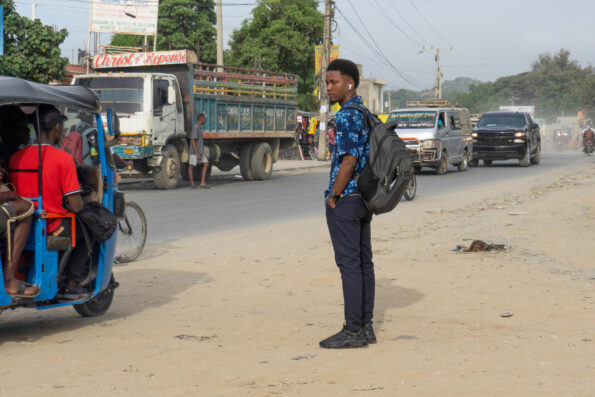
Itzel Hervert, GPJ Mexico
Over 30,000 students, elderly and disabled citizens in over a dozen municipalities in Nuevo León state can now receive up to 300 Mexican pesos ($15.57) on the state government’s dime each month to pay for public transportation.
MONTERREY, MEXICO — It’s rush hour in the capital city of Mexico’s northern Nuevo León state, and bus drivers ignore red lights to hurtle across intersections. The sounds of their engines blast through the city.
Passengers inside hold on to whatever they can as the buses careen around curves.
Still, the passengers say they’re happy. Some are among the 30,000 people who now receive up to 300 Mexican pesos ($15.57) on the state government’s dime each month to pay for public transportation. A single ride generally costs between 9.50 and 10.20 pesos (50 to 53 cents).
The “Bono Preferente” program, which began its pilot phase in August, serves high school students, residents over the age of 70 and the disabled in 19 of the state’s 51 municipalities. The program’s name means “preferential bonus.”
The pilot phase of the program, which aims to foster a public transportation culture and improve quality of life for the targeted demographics, ends in December. Until then, recipients will get extra money added to their public transportation cards.
But it’s not as simple as a free bus ticket. Students, as well as elderly people who feel up to it, qualify for the program by participating in “Héroes por Nuevo León,” a government community service program. “Bono Preferente” users must participate in community service for four hours one day each month.



Some Monterrey students say the bus money is worth it.
“Four hours of service is not much, and it helps us. It helps us a lot,” says 21-year-old Ricardo Sánchez Rodríguez, a student at Universidad Autónoma de Nuevo León university.
And for the elderly, the program is a reminder that they’re not forgotten.
“The government almost never remembers us, but it’s good that they help us, even if it’s a little,” says Miguel Sánchez del Bosque, 76. “I don’t want to retire, but if I can’t afford transportation, well then I can’t work, and at this age whatever help is good.”



Jaime Rodríguez Calderón, Nuevo León’s governor, says the program is designed to help people lead better lives without worrying about transportation costs. At the same time, he says, the government is working to improve other pieces of the public transit system. For example, it is spending 25 million pesos ($1.3 million) to clean and repair the state’s bus fleet.
“We are going to do everything so that transportation users are the beneficiaries,” he says in a phone interview. “We are going to give them a better quality and much faster service.”
The changes will bring Nuevo León’s public transportation system closer to the quality of those in the developed world, says Alejandra López Puente, head of communication and public relations for the transit agency.
Monterrey residents have mixed reactions to the program. Homero de León, a taxi driver, says people who get the bus money will appreciate it because they have to do community service.
“Look, it works like this, if you give people something free, they don’t care for it,” he says. “So with the social service now they will take care of it better. This is changing the entire game.”
De León, who earns approximately 500 pesos per day ($26), says he’s not concerned the program will affect his earnings.
“The rest will continue taking taxis,” he says.
But Claudia Rogríguez Cantú, a mother of three, says the program asks too much of students.
“It seems good to me that [the government] wants to save transportation [money] for them, but they need time to study and do work. They would do the social service the weekends, and that affects their study time,” she says.
No sources in this story are related.
Natalia Aldana, GPJ, translated interviews from Spanish.







